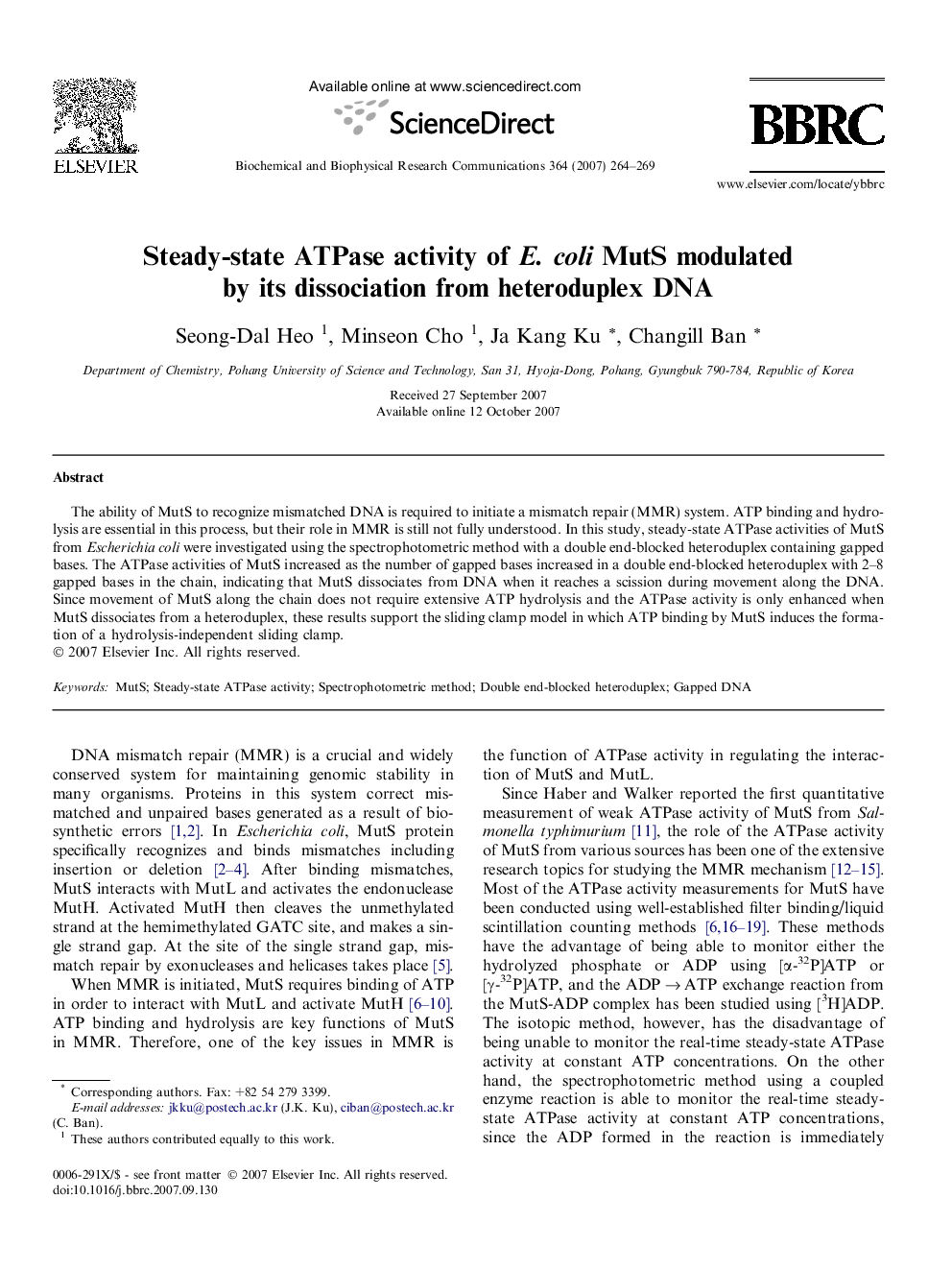| Article ID | Journal | Published Year | Pages | File Type |
|---|---|---|---|---|
| 1936060 | Biochemical and Biophysical Research Communications | 2007 | 6 Pages |
The ability of MutS to recognize mismatched DNA is required to initiate a mismatch repair (MMR) system. ATP binding and hydrolysis are essential in this process, but their role in MMR is still not fully understood. In this study, steady-state ATPase activities of MutS from Escherichia coli were investigated using the spectrophotometric method with a double end-blocked heteroduplex containing gapped bases. The ATPase activities of MutS increased as the number of gapped bases increased in a double end-blocked heteroduplex with 2–8 gapped bases in the chain, indicating that MutS dissociates from DNA when it reaches a scission during movement along the DNA. Since movement of MutS along the chain does not require extensive ATP hydrolysis and the ATPase activity is only enhanced when MutS dissociates from a heteroduplex, these results support the sliding clamp model in which ATP binding by MutS induces the formation of a hydrolysis-independent sliding clamp.
